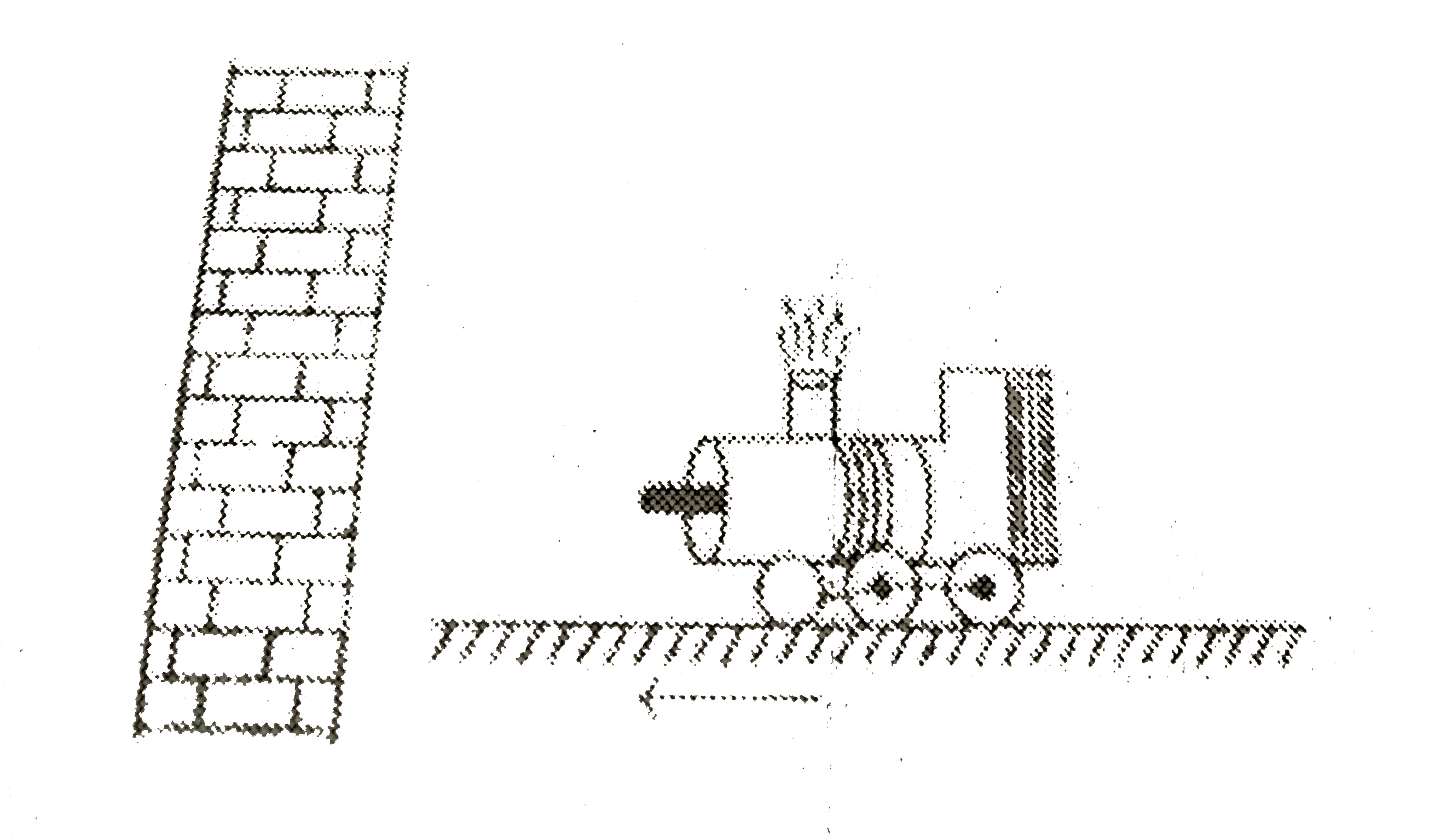A bat flies perpendicularly towards a wall with a speed of 6 m/s, emitting sound of frequency 450 kHz. What is the frequency of the wave reflected from the wall that it will hear? Given c=340m/s?
To solve the problem, we will use the Doppler effect formula to find the frequency of the sound wave reflected from the wall that the bat will hear.
1. Identify the given values:
- Speed of sound, c=340m/s
- Speed of the bat (observer), Vo=6m/s
- Frequency of sound emitted by the bat, ν=450kHz=450×103Hz
- Speed of the source (the wall is stationary), Vs=0m/s
2. Understand the scenario:
- The bat is moving towards a stationary wall, emitting sound waves. The sound waves will reflect off the wall and return to the bat.
- Since the bat is moving towards the wall, it will perceive a higher frequency due to the Doppler effect.
3. Apply the Doppler effect formula:
The formula for the apparent frequency ν′ heard by the observer (the bat) when the source is stationary is:
ν′=ν(c+Voc−Vs)
In this case, since the wall is stationary, we will consider the wall as the source of the reflected sound. Thus, we will treat the wall as the source when calculating the frequency after reflection.
4. Substitute the values into the formula:
Since the wall is stationary, Vs=0. However, when the sound reflects off the wall, we consider the bat as the observer moving towards the wall. Therefore, we will use:
ν′=450×103(340+6340−0)
5. Calculate the frequency:
ν′=450×103(346340)
ν′=450×103×1.017647
ν′≈450×103×1.017647≈458.44×103Hz
6. Convert to kHz:
ν′≈458.44kHz
7. Final Result:
The frequency of the wave reflected from the wall that the bat will hear is approximately 458.44kHz.
- Speed of sound, c=340m/s
- Speed of the bat (observer), Vo=6m/s
- Frequency of sound emitted by the bat, ν=450kHz=450×103Hz
- Speed of the source (the wall is stationary), Vs=0m/s
- The bat is moving towards a stationary wall, emitting sound waves. The sound waves will reflect off the wall and return to the bat.
- Since the bat is moving towards the wall, it will perceive a higher frequency due to the Doppler effect.
The formula for the apparent frequency ν′ heard by the observer (the bat) when the source is stationary is:
ν′=ν(c+Voc−Vs)
In this case, since the wall is stationary, we will consider the wall as the source of the reflected sound. Thus, we will treat the wall as the source when calculating the frequency after reflection.
Since the wall is stationary, Vs=0. However, when the sound reflects off the wall, we consider the bat as the observer moving towards the wall. Therefore, we will use:
ν′=450×103(340+6340−0)
ν′=450×103(346340)
ν′=450×103×1.017647
ν′≈450×103×1.017647≈458.44×103Hz
ν′≈458.44kHz
The frequency of the wave reflected from the wall that the bat will hear is approximately 458.44kHz.
Topper's Solved these Questions
- SOUND WAVES AND DOPPLER EFFECTBOOK - CENGAGE PHYSICS ENGLISHCHAPTER - SOUND WAVES AND DOPPLER EFFECTEXERCISE - Subjective
56 Videos
- SOUND WAVES AND DOPPLER EFFECTBOOK - CENGAGE PHYSICS ENGLISHCHAPTER - SOUND WAVES AND DOPPLER EFFECTEXERCISE - Single Correct
252 Videos
- SOUND WAVES AND DOPPLER EFFECTBOOK - CENGAGE PHYSICS ENGLISHCHAPTER - SOUND WAVES AND DOPPLER EFFECTEXERCISE - Exercise 6.1
56 Videos
- RIGID BODY DYNAMICS 2BOOK - CENGAGE PHYSICS ENGLISHCHAPTER - RIGID BODY DYNAMICS 2EXERCISE - Interger
2 Videos
- SUPERPOSITION AND STANDING WAVESBOOK - CENGAGE PHYSICS ENGLISHCHAPTER - SUPERPOSITION AND STANDING WAVESEXERCISE - Comprehension Type
5 Videos
Similar Questions
A bat flies perpendicularly towards a wall with a speed of 6 m/s, emitting sound of frequency 450 kHz. What is the frequency of the wave reflected from the wall that it will hear? Given c=340ms?
View SolutionA bat flies perpendicularly towards a wall with a speed of 6 m/s, emitting sound of frequency 450 kHz. What is the frequency of the wave reflected from the wall that it will hear? Given c=340ms?
View SolutionAn engine driver moving towards a wall with velocity of 50ms−1 emits a note o frequency 1.2kHz. The frequyency of note after reflection from the wall is eard by the engine driver when speed of sound in air is 350ms−1 is

View SolutionA sound wave travels at a speed of 339m/s. If its wavelength is 1.5cm, what is the frequency of the wave ? Will it be audible ?
View SolutionA bus is moving towards a huge wall with a velocity of 5m/s−1. The driver sounds a horn of frequency 200Hz. The frequency of the beats heard by a passenger of the bus will be ………… Hz (Speed of sound in air =342m/s−1)
View SolutionA car emitting sound of frequency 500 Hz speeds towards a fixed wall at 4ms. An observer in the car hears both the source frequency as well as the frequency of sound reflected from the wall. If he hears 10 beats per second between the two sounds, the velocity of sound in air will be
View SolutionBus moving with speed v forwards a stationary wall. it produces sound of frequency f=420Hz.Theheardequencyofref≤ctedsoundomwallbydriveris490 Hz.Calca––tethespeedvofbus.Thevelocityofsound∈airis330 m/s.
View SolutionA driver in a stationary car horns which produces sound waves having frequency 2000 Hz. The waves are directed normally towards a reflecting wall. If the wall approaches the car with a velocity u = 3.3 m/s. The change in the frequency of sound after reflection from the wall is x%. Then x
View SolutionAn observer is moving with a constant speed of 20m/s on a circular track of radius 50m. A source kept at centre of track emits a sound of frequency 200 Hz. Then the frequency received by the observer is x×102 Hz, what is value of x. (V= 340m/s)
View SolutionA car travels at a speed of 'a' towards a high wall. The driver sounds a horn of frequency 'n'. If V is the velocity of sound in air, frequency of reflected sound heard by the driver is
View Solution
